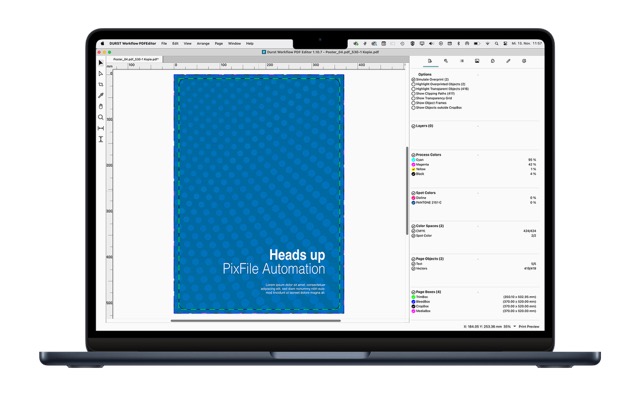Is outdoor advertising still relevant?

Outdoor advertising, also known as out-of-home advertising (OOH), is one of the oldest forms of advertising. Sonja Angerer discusses whether in an increasingly digital world, this traditional form of advertising is still relevant?
Anyone who see billboards in a key German city will soon believe that outdoor advertising is not successful right now. Outdated campaign ideas and many social topics suggest that sales in OOH are rapidly declining. However, this in fact is quite the contrary.
 CAPTION: Billboards today often feature cultural and social advertising. Image Credit: S. Angerer
CAPTION: Billboards today often feature cultural and social advertising. Image Credit: S. Angerer
Outdoor advertising on the road to success in Germany
The sales of outdoor advertising in Germany show continuous growth after the Pandemic. According to Statista, OOH generated net sales of almost 1.3 billion euros in Germany in 2023. By 2028, it is estimated that this will increase to more than 1.33 billion euros. With approximately 4.6%, this form of advertising ranks 5th among the major advertising channels in Germany, behind the Internet, print, TV and printed direct mail.
For 2024, the figures look even more positive. According to Nielsen Media Germany, OOH's revenue grew by an impressive 23.3% in the first half of 2024. This equates to gross sales of 1.5 billion euros, with digital advertising displays or DOOH which already accounts for 42.5% of all sales.
This is remarkable because, according to German Outdoor Advertising Association, only 4,500 digital systems in the streets and 3,000 DOOH systems in train and commuter stations are included in the 2024 statistics. The total number of OOH systems in Germany is 271,000.
Traditional forms of outdoor advertising such as posters and transport advertising are slightly declining in sales in Germany. To summarise: Outdoor advertising is not unsuccessful, but printed outdoor advertising is slowly becoming outdated and not used. But today, there are more factors to consider regarding outdoor advertising. Let us investigate ecological and social benefits and shortcomings.
 CAPTION: A large part of the current growth in outdoor advertising can be accounted to digital signage. Image Credit: S. Angerer
CAPTION: A large part of the current growth in outdoor advertising can be accounted to digital signage. Image Credit: S. Angerer
Environmental impact of outdoor advertising
The environmental impact of outdoor advertising is an increasingly important issue. Traditional billboard advertising consumes significant amounts of paper and energy. According to the WWF, the per capita consumption of paper in Germany was already 227 kilograms in 2019. It seems unlikely that that number has decreased since then.
Digital outdoor advertising does not consume paper. However, it also requires energy, even as modern LED displays are much more energy-efficient than older technologies. Many providers are switching to more sustainable solutions such as solar energy. Night-time shutdowns are also becoming increasingly popular.
Not only does that help reduce energy consumption, but night-time shutdowns also control light pollution. This has lately been recognised as a problem for biodiversity and as a health hazard. Overall, outdoor advertising has a rather small ecological footprint, when compared to other forms of advertising such as print or online, especially when considering emissions per advertising contact as a benchmark.
 CAPTION: Lights for printed posters are often turned off after 10 p.m. to save energy. Image Credit: S. Angerer
CAPTION: Lights for printed posters are often turned off after 10 p.m. to save energy. Image Credit: S. Angerer
Social impact of outdoor advertising
The public discourse has become very polarised and unyielding in many countries, including Germany. Experts see "filter bubbles" as one reason for this. This is because personalised advertising and online communication means that people are presented with very different information depending on their preferences. They feel strengthened in their opinions and views only. Information with a different perspective is no longer displayed to them at all.
Outdoor advertising reaches a broad target group, including everyone frequenting public spaces. Communication is largely independent of social status, age, background or personal opinions. Therefore, OOH can help to break down filter bubbles and instead create some common ground. Mega posters and large digital displays are well-known for being able to capture attention.
Outdoor advertising offers fewer options for direct interaction with the target group than online advertising. But with printed outdoor advertising people have become accustomed to using QR codes to connect to online elements of integrated campaigns. Digital displays offer even more options, for example through multimedia elements and discount codes that passers-by can download to their smartphones by Bluetooth.
 CAPTION: Mega posters attract the attention of every passer-by, regardless of social status or political opinions. Image Credit: S. Angerer
CAPTION: Mega posters attract the attention of every passer-by, regardless of social status or political opinions. Image Credit: S. Angerer
Conclusion: Outdoor advertising and digital printing
Outdoor advertising remains very important for the revenues of screen, offset and digital printers. Print shops are benefiting from the high demand for high-quality print products for outdoor advertising.
In addition, digitalisation is opening new business opportunities in digital advertising. In summary, it can be concluded that outdoor advertising is still up to date despite the digital transformation.
However, it is to be expected that Digital Signage will continue to replace spaces for printed advertising in the next few years, especially at regularly visited locations. This is partly due to the more attractive margins that advertising networks can achieve for advertising on screens.
But, Digital Signage also offers designers more opportunities to create exciting and effective advertising, integrating animated elements. For printers, this means that they must concentrate on new ideas and specialties in outdoor advertising. At the same time, they should build even more expertise in digital advertising technologies. By combining traditional and digital advertising formats, they can cover a wide range of customer needs and strengthen their market position.
To discover the latest content that covers a wide range of sectors including outdoor advertising and signage sign up for FESPA’s free monthly newsletter FESPA World available in English, Spanish and German.
Interested in joining our community?
Enquire today about joining your local FESPA Association or FESPA Direct
Recent news
-1.png?width=550)
FESPA Awards - excellence in screen printing, non-printed signage, fine art and paper
FESPA Awards are categorised into 18 specialist groups which are then judged by a panel of experienced judges. The Awards help to showcase the creativity, innovation and craftmanship within the print and signage industries. This article highlights four winners from 2023, Kolorcraft, Stylographics, Graffiti Siebdruck and Sincerely Screen Co., whose work showed the dynamic possibilities within screen printing, non-printed signage, fine art and paper.

How to maximise your value to your client
Mark Coudray shares how printers can maximise their client value and the importance of having a shared vision, establishing clear expectations and understanding technical requirements.

Driving Industrial Innovation for Digital Printed Textiles with Epson Italia
In this podcast, Debbie McKeegan interviews Francesco Nozza, the business development manager at Epson Italia, together they discuss the future of industrial direct to textile printing.
.jpg?width=550)
PixFile introduces cutting-edge PDF Editor to boost productivity and streamline File Management
PixFile, a newly formed digital solutions provider has launched its versatile PDF Editor, a comprehensive tool designed to streamline PDF management, generate print predictable files and increase productivity for professionals in both printing and advertising industries.